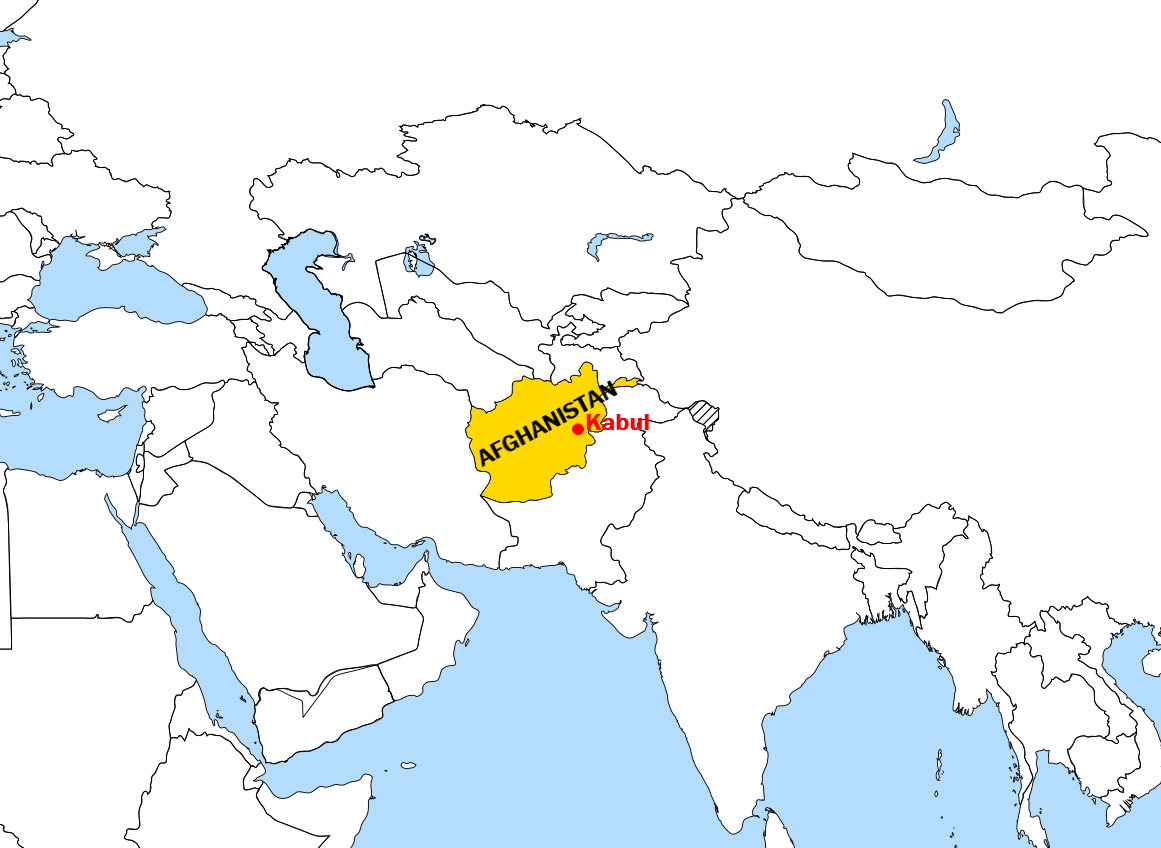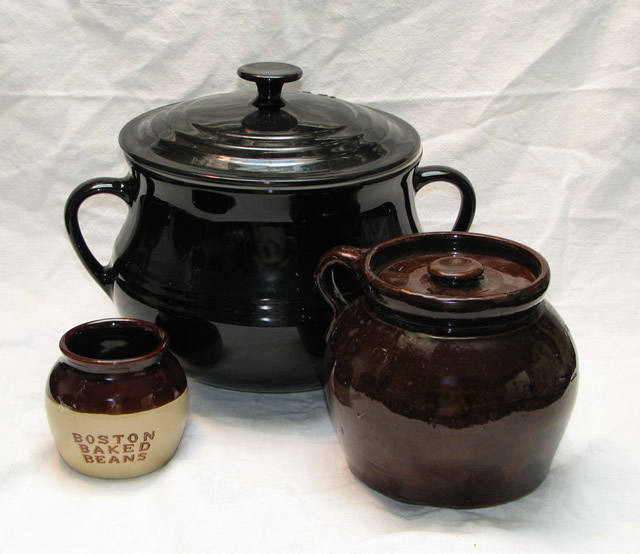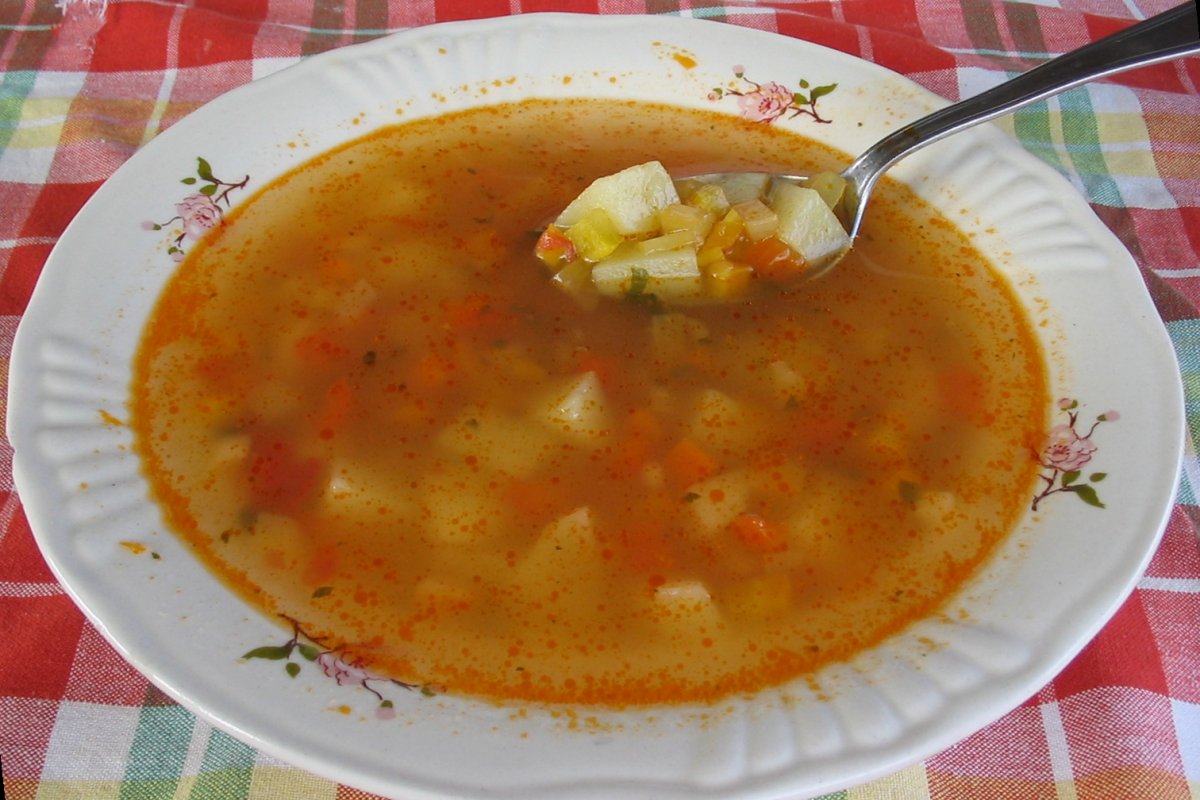|
Yakhni
Yakhni ( fa, یخنی , ar, يخني, ur, یخنی, hi, यख़नी, el, γιαχνί), yahni (Turkish), or yahniya ( bg, яхния, Serbian, mk, јанија) is a class of dishes prepared in a vast area from South Asia to the Balkans. History A meat stew named ''yakhni'' originated in Medieval Persia. The name derives from the covered clay pot in which it was originally cooked. The meaning of the Persian word is "store of food". Different varieties of this dish later spread eastwards to Afghanistan, Uzbekistan and South Asia and westwards to the Ottoman Empire reaching the Levant and the Balkans. Varieties In Iranian cuisine, ''yakhni'' is a meat stew akin to khoresh, while ''yakhni-polow'' is a pilaf cooked in a stew. In Arab (especially Palestinian), Greek, and Turkish cuisines, it is a stew of meat, fish, or vegetables in a browned-onion base with tomatoes and olive oil. In Bulgarian cuisine, sunflower oil is used instead of olive oil. In Romanian cuisine, ... [...More Info...] [...Related Items...] OR: [Wikipedia] [Google] [Baidu] |
Uzbek Cuisine
Uzbek cuisine shares the culinary traditions of peoples across Central Asia. There is a great deal of grain farming in Uzbekistan, so breads and noodles are of importance, and Uzbek cuisine has been characterized as "noodle-rich". Mutton is a popular variety of meat due to the abundance of sheep in the country and it is a part of various Uzbek dishes. Description Bread (''nan'' or ''non'') is a staple; it is baked in a ''tandur'', which is frequently a pot rather than the deep pit or oven of India and Afghanistan. Many varieties of rice are eaten. Potatoes were introduced by the Soviets, and some elder Uzbeks still refuse to eat them. The most popular meat is mutton. Beef is common, and goat is eaten only rarely. Horse meat is used as well; there are sausages made of horse meat, as is the case with many other Turkic peoples. Karakul sheep provide meat but also fat, particularly the fat from the tail end, called ''qurdiuq''. Uzbekistan's signature dish is palov (''plov'' or ... [...More Info...] [...Related Items...] OR: [Wikipedia] [Google] [Baidu] |
Afghan Cuisine
Afghan cuisine ( ps, افغان پخلی, translit=Afghan Pakhlai, ) is influenced by Persian, Central Asian and Indian cuisines due to Afghanistan's close proximity and cultural ties. The cuisine is mainly based on Afghanistan's main crops, such as wheat, maize, barley, and rice. Accompanying these staple grains are native fruits, vegetables, and dairy products, such as milk, yogurt, whey, pomegranates, grapes, and sweet melons. Most of the people's diet revolve around rice-based dishes, while naan bread is consumed with most meals. Tea is generally consumed daily in large quantities, and is a major part of hospitality. The culinary specialties reflect the nation's ethnic and geographic diversity. The national dish of Afghanistan is Kabuli palaw, a rice dish cooked with raisins, carrots, nuts and lamb or beef. Background The cuisine of Afghanistan has elements from various places, for example chillies or garam masala from India, coriander and mint from Iran, dum ... [...More Info...] [...Related Items...] OR: [Wikipedia] [Google] [Baidu] |
Stock (food)
Stock, sometimes called bone broth, is a savory cooking liquid that forms the basis of many dishes particularly soups, stews, and sauces. Making stock involves simmering animal bones, meat, seafood, or vegetables in water or wine, often for an extended period. Mirepoix or other aromatics may be added for more flavor. Preparation Traditionally, stock is made by simmering various ingredients in water. A newer approach is to use a pressure cooker. The ingredients may include some or all of the following: Bones: Beef and chicken bones are most commonly used; fish is also common. The flavor of the stock comes from the bone marrow, cartilage and other connective tissue. Connective tissue contains collagen, which is converted into gelatin that thickens the liquid. Stock made from bones needs to be simmered for long periods; pressure cooking methods shorten the time necessary to extract the flavor from the bones. Meat: Cooked meat still attached to bones is also used as an i ... [...More Info...] [...Related Items...] OR: [Wikipedia] [Google] [Baidu] |
Greek Cuisine
Greek cuisine (Greek: Ελληνική Κουζίνα) is the cuisine of Greece and the Greek diaspora. In common with many other cuisines of the Mediterranean, it is founded on the triad of wheat, olive oil, and wine. It uses vegetables, olive oil, grains, fish, and meat, including pork, poultry, veal and beef, lamb, rabbit, and goat. Other important ingredients include pasta (for example hilopites), cheeses, lemon juice, herbs, olives, and yogurt. Bread made of wheat is ubiquitous; other grains, notably barley, are also used, especially for paximathia. Common dessert ingredients include nuts, honey, fruits, and filo pastries. It continues traditions from Ancient Greek and Byzantine cuisine, while incorporating Balkan, Turkish and Italian influences. History Greek cuisine is part of the culture of Greece and is recorded in images and texts from ancient times. Its influence spread to ancient Rome and then throughout Europe and beyond. Ancient Greek cuisine was cha ... [...More Info...] [...Related Items...] OR: [Wikipedia] [Google] [Baidu] |
Shorba
Chorba or shorba (from dialectal Arabic ; from , 'to drink') is a broad class of stews or rich soups found in national cuisines across the Middle East, Central and Eastern Europe, Central Asia and the Indian subcontinent. It is often prepared with added ingredients but served alone as a broth or with bread. Etymology ''Chorba'', or ''shorba'', is variously derived from the Arabic word meaning 'gravy' or from a Persian term from (, 'salty, brackish') and /, (/, 'water/stew') or from a hypothetical cognate word common to Arabic and Persian. Chorba is also called ( am, ሾርባ), ( uz, шўрва), ( ps, شوروا), ( bg, чорба), (Serbo-Croatian), (Somali), ( Romanian), (russian: шурпа), ( ug, شورپا / ), (Turkish), ( ky, шорпо) and ( kk, сорпа). In the Indian subcontinent, the term in Hindi () simply means gravy. It is a Mughlai dish and it has vegetarian forms such as tomato shorba. Types Shorwa is a traditional Afghan dish which is ... [...More Info...] [...Related Items...] OR: [Wikipedia] [Google] [Baidu] |
India
India, officially the Republic of India ( Hindi: ), is a country in South Asia. It is the seventh-largest country by area, the second-most populous country, and the most populous democracy in the world. Bounded by the Indian Ocean on the south, the Arabian Sea on the southwest, and the Bay of Bengal on the southeast, it shares land borders with Pakistan to the west; China, Nepal, and Bhutan to the north; and Bangladesh and Myanmar to the east. In the Indian Ocean, India is in the vicinity of Sri Lanka and the Maldives; its Andaman and Nicobar Islands share a maritime border with Thailand, Myanmar, and Indonesia. Modern humans arrived on the Indian subcontinent from Africa no later than 55,000 years ago., "Y-Chromosome and Mt-DNA data support the colonization of South Asia by modern humans originating in Africa. ... Coalescence dates for most non-European populations average to between 73–55 ka.", "Modern human beings—''Homo sapiens''—originated in Africa. Th ... [...More Info...] [...Related Items...] OR: [Wikipedia] [Google] [Baidu] |
Pakistan
Pakistan ( ur, ), officially the Islamic Republic of Pakistan ( ur, , label=none), is a country in South Asia. It is the world's List of countries and dependencies by population, fifth-most populous country, with a population of almost 243 million people, and has the world's Islam by country#Countries, second-largest Muslim population just behind Indonesia. Pakistan is the List of countries and dependencies by area, 33rd-largest country in the world by area and 2nd largest in South Asia, spanning . It has a coastline along the Arabian Sea and Gulf of Oman in the south, and is bordered by India to India–Pakistan border, the east, Afghanistan to Durand Line, the west, Iran to Iran–Pakistan border, the southwest, and China to China–Pakistan border, the northeast. It is separated narrowly from Tajikistan by Afghanistan's Wakhan Corridor in the north, and also shares a maritime border with Oman. Islamabad is the nation's capital, while Karachi is its largest city and fina ... [...More Info...] [...Related Items...] OR: [Wikipedia] [Google] [Baidu] |
Fasole Cu Cârnați
''Fasole cu cârnați'' ("beans with sausages", ) is a popular Romanian dish, consisting of baked beans and sausages. A variation replaces the sausages with '' afumătură'' (smoked meat). Also a traditional Army dish, ''fasole cu cârnați'' is prepared by Army cooks and served freely to the crowds during the National Day celebrations (on 1 December) in Bucharest and Alba Iulia. The main ingredients for this dish are: beans, smoked pork, carrots, onions, tomatoes, parsnip, tomato sauce and bay leaf. See also * List of sausage dishes * List of stews This is a list of notable stews. A stew is a combination of solid food ingredients that have been cooked in liquid and served in the resultant gravy. Ingredients in a stew can include any combination of vegetables (such as carrots, potatoes, be ... * References Romanian stews Vegetable dishes Sausage dishes {{sausage-stub ... [...More Info...] [...Related Items...] OR: [Wikipedia] [Google] [Baidu] |
Baked Beans
Baked beans is a dish traditionally containing white beans that are parboiled and then, in the US, baked in sauce at low temperature for a lengthy period. In the United Kingdom, the dish is sometimes baked, but usually stewed in sauce. Canned baked beans are not baked, but are cooked through a steam process. Baked beans occurred in Native American cuisine, and are made from beans indigenous to the Americas. It is thought that the dish was adopted and adapted by English colonists in New England in the 17th century and, through cookbooks published in the 19th century, spread to other regions of the United States and into Canada. However, the connection to Native American cuisine may be apocryphal, as legumes such as broad beans and lentils prepared in various sauces had been established in European cuisine long before the Middle Ages. Today, in the New England region of the United States, a variety of indigenous legumes are used in restaurants or in the home, such as Jacob's ... [...More Info...] [...Related Items...] OR: [Wikipedia] [Google] [Baidu] |
Romanian Cuisine
Romanian cuisine () is a diverse blend of different dishes from several traditions with which it has come into contact, but it also maintains its own character. It has been mainly influenced by Turkish and a series of European cuisines in particular from the Balkans, or Hungarian cuisine as well as culinary elements stemming from the cuisines of Central Europe. Romanian cuisine includes numerous holiday dishes arranged according to the mentioned season and holiday since the country has its roots in the Eastern Orthodox Church. Romanian dishes consist of vegetables, cereals, fruits, honey, milk, dairy products, meat and game. Multiple different types of dishes are available, which are sometimes included under a generic term; for example, the category '' ciorbă'' includes a wide range of soups with a characteristic sour taste. Variations include meat and vegetable soup, tripe ('' ciorbă de burtă'') and calf foot soup, or fish soup, all of which are soured by lemon juice, sa ... [...More Info...] [...Related Items...] OR: [Wikipedia] [Google] [Baidu] |
Bulgarian Cuisine
Bulgarian cuisine ( bg, българска кухня , translit=bǎlgarska kuhnja) is part of the cuisine of Southeast Europe, sharing characteristics with other Balkan cuisines. Bulgarian cooking traditions are diverse because of geographical factors such as climatic conditions suitable for a variety of vegetables, herbs, and fruit. Aside from the vast variety of local Bulgarian dishes, Bulgarian cuisine shares a number of dishes with Persian, Turkish, and Greek cuisine. Bulgarian cuisine includes a significant contribution from Ottoman cuisine, and therefore shares a number of dishes with Middle Eastern cuisine, including '' moussaka'', '' gyuvetch'', ''kyufte'', '' baklava'', ''ayran'', ''gyuvech'', and '' shish kebab''. Bulgarian food often incorporates salads as appetizers and is also noted for the prominence of dairy products, wines, and other alcoholic drinks such as '' rakia''. The cuisine also features a variety of soups, such as the cold soup tarator, and pastri ... [...More Info...] [...Related Items...] OR: [Wikipedia] [Google] [Baidu] |
Olive Oil
Olive oil is a liquid fat obtained from olives (the fruit of ''Olea europaea''; family Oleaceae), a traditional tree crop of the Mediterranean Basin, produced by pressing whole olives and extracting the oil. It is commonly used in cooking: for frying foods or as a salad dressing. It can be found in some cosmetics, pharmaceuticals, soaps, and fuels for traditional oil lamps. It also has additional uses in some religions. The olive is one of three core food plants in Mediterranean cuisine; the other two are wheat and grapes. Olive trees have been grown around the Mediterranean since the 8th millennium BC. In 2019–2020, world production of olive oil was . Spain was the largest producer followed by Italy, Tunisia, Greece, Turkey and Morocco. San Marino has by far the largest per capita consumption of olive oil worldwide. The composition of olive oil varies with the cultivar, altitude, time of harvest, and extraction process. It consists mainly of oleic acid (up to 83 ... [...More Info...] [...Related Items...] OR: [Wikipedia] [Google] [Baidu] |
.jpg)





